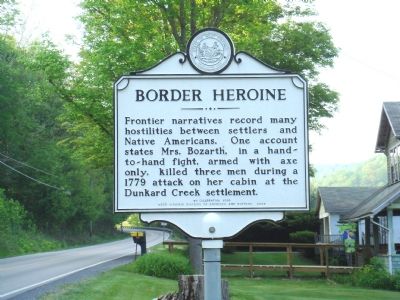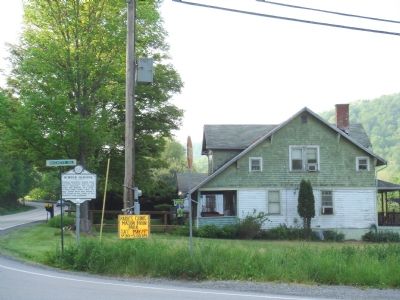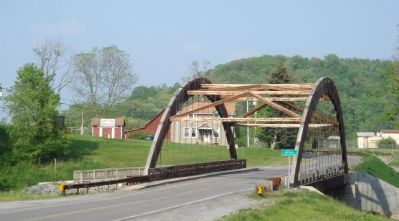Near Pentress in Monongalia County, West Virginia — The American South (Appalachia)
Border Heroine
Erected 2004 by West Virginia Celebration 2000 and the West Virginia Division of Archives and History.
Topics and series. This historical marker is listed in these topic lists: Native Americans • Settlements & Settlers. In addition, it is included in the West Virginia Archives and History series list. A significant historical year for this entry is 1779.
Location. 39° 42.774′ N, 80° 7.062′ W. Marker is near Pentress, West Virginia, in Monongalia County. Marker is at the intersection of Mason-Dixon Highway (West Virginia Route 7) and Buckeye Road (County Route 39) on Mason-Dixon Highway. Touch for map. Marker is in this post office area: Morgantown WV 26501, United States of America. Touch for directions.
Other nearby markers. At least 5 other markers are within 2 miles of this marker, measured as the crow flies. Shanks Mill (approx. ¼ mile away); Catawba War Path (approx. 0.7 miles away); Price Memorial Cemetery (approx. ¾ mile away); Statler's Fort (approx. 1.1 miles away); Veterans Memorial (approx. 2 miles away).
Regarding Border Heroine. “During these bloody wars, also, exploits were performed by females worthy of a record upon the pages of the world’s history. One occurred at Dunkard’s creek, about the same time as the former. Two or three families had fled for safety to the house of a Mr. Bozarth. The Indians came upon it when it contained only Mrs. Bozarth and two other men. Warned by the children, who were playing outside, that the ‘ugly red men’ had come, one of the men ran to the door. He received a shot and fell. The Indian, who had shot him, sprang in after him, and grappling with the other white man was thrown down. Having no weapon, he called upon Mrs. Bozarth for a knife. Not finding a knife, she seized an ax, and with a single blow cleft the head of the savage. At that moment another Indian shot the white man dead. Mrs. Bozarth, by a well-directed blow, leveled the savage with her ax. Others were crowding in behind; the first received a blow on the head. As the others drew back, she succeeded in closing and fastening the door. The two white men, though both severely wounded, aided the heroine in maintaining the defense, till a detachment from a neighboring settlement came up for their relief. All the children in the yard were butchered by the incarnate fiends. The whole transaction lasted hardly three minutes; and yet, considering the numbers and circumstances, it was a severe and bloody affair.” —paragraph from the 1857 book Life Among the Indians; or, Personal Reminiscences and Historical Incidents Illustrative of Indian Life and Character by Rev. James B. Finley and edited by Rev. D. W. Clark, D.D.
The Rev. Finley, a Methodist minister, adds in the same chapter, titled “Indian Cruelties”: “But it must be confessed that these acts of savage cruelty were not all on the side of the Indians. Indeed, had the acts of the pioneers toward the Indians always been characterized by kind treatment and fair dealing, it is doubtful whether the savage cruelties inflicted on them would ever have occurred.”
Credits. This page was last revised on July 14, 2019. It was originally submitted on May 19, 2007, by J. J. Prats of Powell, Ohio. This page has been viewed 2,485 times since then and 94 times this year. Photos: 1, 2, 3. submitted on May 19, 2007, by J. J. Prats of Powell, Ohio.


